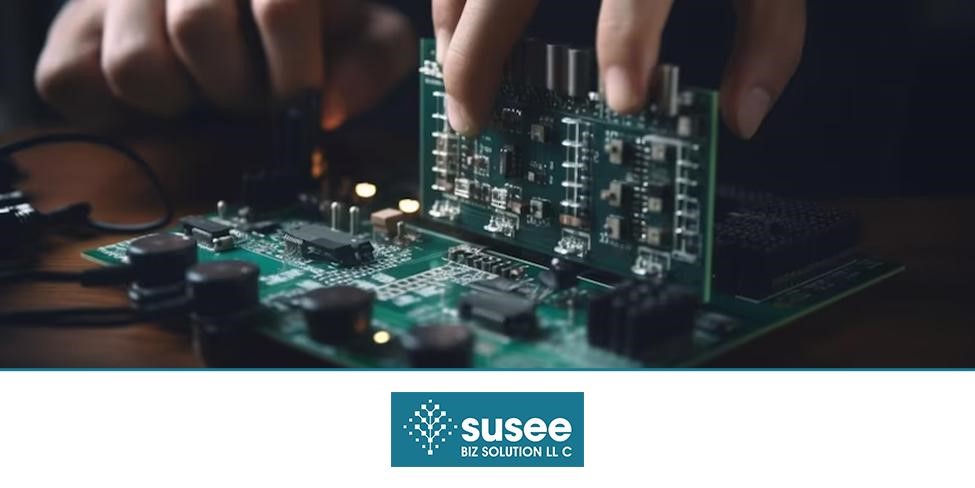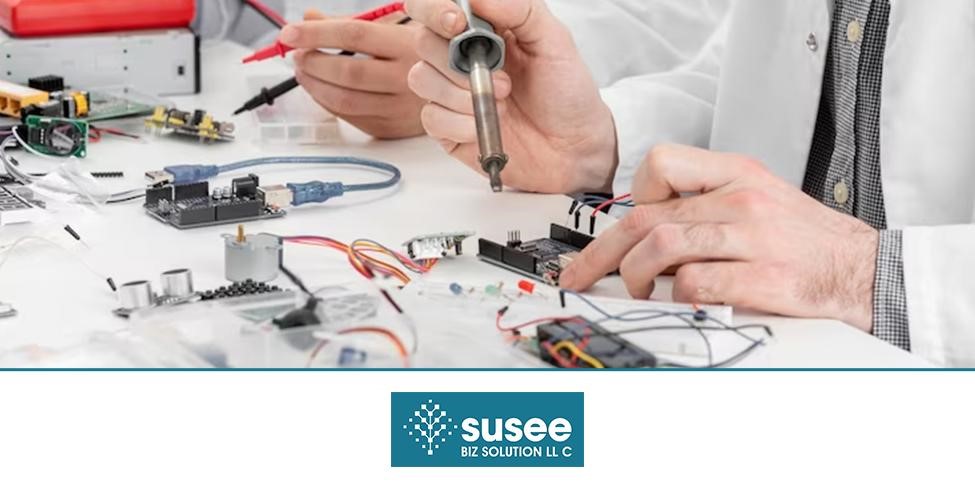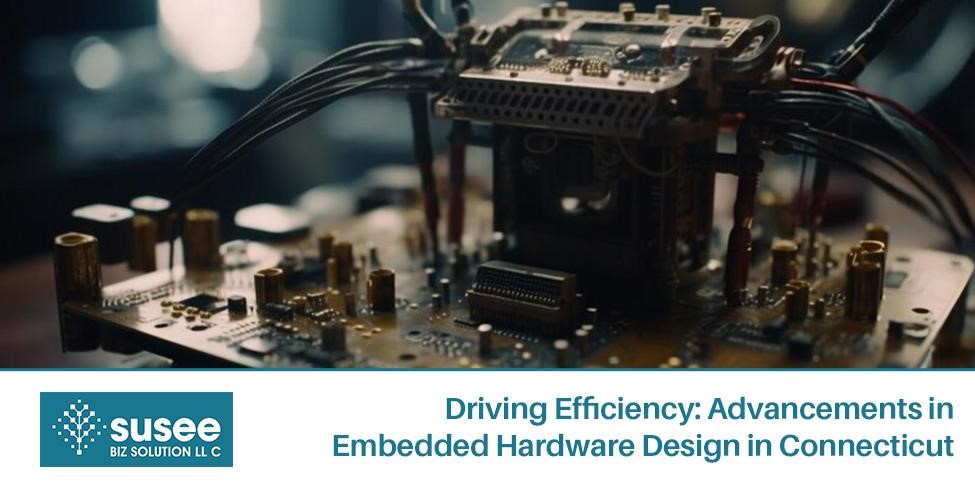Overview of Embedded Hardware Design
At SuseeBiz, we believe that embedded hardware design is a crucial element in shaping the technological landscape and driving innovation across industries. Connecticut, known for its advancements in manufacturing and engineering, stands out as a center of excellence for embedded hardware design. This process involves creating electronic systems around microcontrollers, microprocessors, and specialized computing devices, all meticulously engineered to perform specific functions reliably within larger products or devices.
Importance of Efficiency in Design
Knowing that efficiency is key in embedded hardware design in Connecticut in a fast-paced technological environment where compactness, performance, and energy efficiency are essential, optimizing hardware design is critical. Efficient designs not only improve system performance and functionality but also help minimize resource usage and maximize cost-effectiveness.
Connecticut’s focus on efficiency is evident in every aspect of embedded hardware design. Engineers and innovators, including those at SuseeBiz, prioritize selecting the right components, utilizing streamlined design methods, and implementing optimization strategies to drive efficiency in hardware design. The dedication not only leads to cutting-edge products and solutions but also solidifies Connecticut’s position as a leader in the global embedded hardware market.
Historical Perspective
Connecticut takes pride in its extensive history in the development of embedded hardware design, marked by notable achievements and groundbreaking discoveries. The state’s progression in this field is a testament to its unwavering dedication to technological progress and inventive thinking.
Evolution of Embedded Hardware Design in Connecticut
The history of embedded hardware design in Connecticut dates back to the mid-20th century, a time when early computing technologies were beginning to emerge. With the rise of the digital revolution, Connecticut quickly became a hub for groundbreaking research and development in the fields of electronics and computing. Major companies like IBM, General Electric, and Sikorsky Aircraft Corporation played a key role in establishing a strong foundation for innovation within the state.
Over the years, Connecticut has seen a series of significant advancements in embedded hardware design. From the creation of early microcontrollers and integrated circuits to the introduction of more complex computing architectures, each milestone has propelled the industry forward, opening up new opportunities and driving technological growth.
Milestones and Key Innovations

Connecticut’s journey in embedded hardware design reached a significant milestone during the emergence of the semiconductor industry in the late 20th century. The state played a crucial part in the growth and production of semiconductor components, which greatly influenced the widespread use of embedded systems in various industries.
Moving into the 21st century, Connecticut has remained at the forefront of advancements in embedded hardware design. This is made possible by harnessing its abundant pool of talented individuals and fostering a collaborative ecosystem. The state’s dedication to pushing the limits of what is possible in embedded hardware design is evident through innovations in fields like IoT, robotics, and autonomous systems.
Today, as we contemplate the historical evolution of embedded hardware design in Connecticut, we acknowledge the lasting influence of previous accomplishments in shaping the current environment. Moving forward, the state is well-positioned to propel future advancements and redefine the potential of embedded hardware design on a worldwide level.
Current Trends and Developments in Embedded Systems
The embedded hardware design industry in Connecticut and particularly our team at Suseebiz is constantly evolving and full of energy, marked by continuous innovation and a strong commitment to achieving the highest standards. Upon closer examination of the latest trends and advancements in embedded systems, it is clear that Connecticut is leading the way in shaping the future of this rapidly changing sector.
Over the past few years, there has been a significant move towards smaller, more energy-efficient embedded systems that can manage more intricate tasks. This change is influenced by the rising need for intelligent, interconnected devices in various industries like healthcare, automotive, aerospace, and consumer electronics. Embedded systems are now responsible for a wide range of functions, from tracking health indicators in medical equipment to facilitating self-driving capabilities in vehicles.
Role of Connecticut in the Global Embedded Hardware Market

Connecticut plays a crucial role in the global embedded hardware market with its significant and extensive contributions. The state is home to a strong network of leading companies, research institutions, and skilled professionals committed to pushing forward embedded hardware design. Connecticut-based companies are at the forefront of innovation in edge computing, machine learning, and cybersecurity, propelling advancements in embedded systems technology.
Additionally, Connecticut’s advantageous location on the East Coast of the United States establishes it as a major player in the worldwide supply chain for embedded hardware components and solutions. The state’s well-developed infrastructure and access to top-tier research facilities further bolster its competitive edge in the global market.
Key Components and Technologies
Embedded hardware design in Connecticut heavily relies on a combination of essential components and technologies that serve as the building blocks for innovative solutions across various sectors. Key elements in this field include microcontrollers and microprocessors, sensors and actuators, as well as power management solutions.
1. Microcontrollers and Microprocessors
Microcontrollers and microprocessors play a crucial role as the central processing units of embedded systems, efficiently executing tasks and handling data. Companies based in Connecticut are at the forefront of developing cutting-edge architectures for these computing platforms, catering to a wide range of applications such as industrial automation and consumer electronics. These advanced platforms offer exceptional processing power, energy efficiency, and seamless integration with peripheral devices. As a result, they enable the creation of sophisticated embedded systems with unmatched functionality.
2. Sensors and Actuators
Sensors and actuators are essential components that work alongside microcontrollers and microprocessors to capture and respond to real-world stimuli. Connecticut has a wide range of expertise in sensor technologies, including environmental sensors that monitor air quality and temperature, as well as motion sensors used in security systems and automotive applications. On the other hand, actuators convert digital signals into physical movements, allowing for precise control and manipulation in industrial machinery, robotics, and medical devices.
3. Power Management Solutions
To ensure optimal performance and longevity of embedded systems while minimizing energy consumption, power management solutions are crucial. Connecticut’s leadership in power electronics and energy management is evident in the development of innovative solutions such as voltage regulators, power converters, and battery management systems. These solutions not only improve the efficiency and reliability of embedded systems but also contribute to sustainability efforts by reducing energy waste and environmental impact.
Design Methodologies
We at SuseeBiz believe that Embedded hardware design in Connecticut is influenced by a range of methodologies that strive to improve efficiency, minimize time-to-market, and guarantee the dependability of intricate systems. These methodologies include Agile Hardware Development, Prototyping and Simulation Techniques, and Integration Strategies, all of which play a vital part in the design process.
1. Agile Hardware Development
Agile Hardware Development, specifically, is a collaborative and iterative approach that emphasizes flexibility, adaptability, and swift prototyping. In Connecticut, businesses harness the power of Agile methodologies to streamline the hardware development process by breaking down extensive projects into more manageable tasks or sprints.
The utilization of an iterative method permits the constant evaluation and improvement of processes, enabling teams to adapt to evolving demands and market conditions promptly. By adopting Agile principles, companies based in Connecticut can expedite innovation, mitigate risks, and provide top-notch embedded hardware solutions that cater to the ever-changing requirements of customers.
2. Prototyping and Simulation Techniques
Prototyping and Simulation Techniques play a crucial role in the arsenal of embedded hardware design, enabling engineers to validate ideas, assess functionality, and detect possible problems prior to commencing large-scale production.
Connecticut is home to a wide array of prototyping facilities and simulation tools that empower engineers to meticulously design, simulate, and enhance embedded systems. Companies in Connecticut utilize various techniques, from virtual prototyping through software simulations to rapid prototyping via 3D printing and PCB fabrication, to streamline the development process and validate the effectiveness of their designs.
3. Integration Strategies
Integration strategies are of utmost importance in the development of embedded systems, as they bring together various components and subsystems to create a unified and dependable system. In Connecticut, integration endeavors are guided by a comprehensive approach that prioritizes modularity, interoperability, and scalability.
Through the adoption of standardized interfaces and communication protocols, our engineers can effortlessly combine hardware and software components, enabling effective collaboration among multidisciplinary teams and expediting the time-to-market.
Optimization Strategies

Embedded hardware design in Connecticut is evident in its unwavering commitment to optimizing various aspects, such as power efficiency, performance, size, and cost. Through the implementation of advanced optimization strategies, companies based in Connecticut strive to enhance the functionality, reliability, and cost-effectiveness of embedded systems, catering to the diverse requirements of industries spanning from healthcare to aerospace.
Power Efficiency Optimization
One of the primary focuses in the design of embedded systems is the optimization of power efficiency, especially in applications where energy consumption plays a crucial role. Connecticut’s proficiency in power electronics and energy management is demonstrated through the creation of innovative solutions aimed at minimizing power usage while maintaining optimal performance.
These solutions encompass a wide range of technologies, including low-power microcontrollers, energy-efficient sensors, power-efficient algorithms, and power management ICs. By leveraging these techniques, Connecticut-based companies effectively optimize power efficiency and prolong battery life in embedded systems.
Performance Optimization
Performance enhancement is a crucial aspect of embedded hardware design, which is influenced by the growing need for fast processing and immediate responsiveness. Companies in Connecticut utilize different strategies to boost performance, such as algorithm optimization, utilizing multicore architectures, and implementing hardware acceleration.
By maximizing the capabilities of contemporary computing platforms, engineers in Connecticut can create embedded systems with exceptional processing capabilities and effectiveness. This allows for the development of various applications, from autonomous vehicles to industrial automation.
Size and Cost Optimization
Size and Cost Optimization plays a crucial role in numerous embedded hardware design projects, as space limitations and financial constraints frequently influence design choices. Companies in Connecticut are known for their expertise in creating compact and cost-efficient solutions by carefully selecting components, optimizing PCB layouts, and integrating systems at the highest level. Our team ensures that by reducing the number of components, shrinking the form factor, and taking advantage of economies of scale, we can provide embedded systems that are not just smaller and more budget-friendly but also extremely dependable and resilient.
Challenges and Solutions

Embedded hardware design in Connecticut poses a unique set of obstacles for engineers and innovators. These challenges encompass design limitations, security considerations, and regulatory compliance obligations. However, Connecticut-based companies possess the ability to conquer these hurdles and deliver state-of-the-art solutions that uphold the highest standards of quality and dependability through their commitment to innovation, collaboration, and strategic troubleshooting.
1. Overcoming Design Constraints
Overcoming design constraints is a key challenge in embedded hardware design. These constraints include restrictions on power consumption, size, and cost. To address these limitations, companies in Connecticut employ various techniques. They embrace modular design approaches, optimize component selection, and leverage advanced manufacturing processes. By carefully weighing trade-offs and maximizing efficiency, engineers in Connecticut can develop embedded systems that not only meet demanding performance requirements but also adhere to stringent design constraints.
2. Addressing Security Concerns
We at Suseebiz place a strong emphasis on security in embedded hardware design, especially in scenarios where data integrity and confidentiality are crucial. Security remains a top priority throughout the design process, with the implementation of advanced encryption algorithms, authentication mechanisms, and secure boot protocols to protect against cyber threats.
New Technologies and Paradigm Shifts
The future of embedded hardware design in Connecticut is on the brink of exciting advancements driven by new technologies and paradigm shifts that are set to transform the landscape of embedded systems. Looking forward, various key trends and predictions provide valuable insights into the direction in which the industry is progressing.
One of the most notable trends influencing the future of embedded hardware design is the rise of edge computing and IoT (Internet of Things) technologies. Suseebiz is leading the way in developing innovative solutions that utilize edge computing to process and analyze data closer to the source, enabling real-time insights and actionable intelligence. With the ongoing integration of sensors, actuators, and connectivity technologies, embedded systems are positioned to play a pivotal role in driving the next generation of smart, interconnected devices across a wide range of sectors.
Advancements in Artificial Intelligence (AI) and Machine Learning
Moreover, advancements in artificial intelligence (AI) and machine learning are poised to revolutionize embedded hardware design, enabling embedded systems to learn, adapt, and evolve. Connecticut-based companies are investing in AI-powered embedded solutions that offer enhanced autonomy, decision-making capabilities, and predictive maintenance functionalities. We also believe that these intelligent embedded systems hold the potential to drive unprecedented levels of efficiency, productivity, and innovation across various applications and industries.
Conclusion
Connecticut’s embedded hardware design excellence drives innovation across industries. From historical milestones to future-focused trends, the state leads with efficiency, security, and emerging technologies, shaping the global landscape of embedded systems.
Also make sure to check out our previous blogs on Power BI and Augmented Reality as well.




